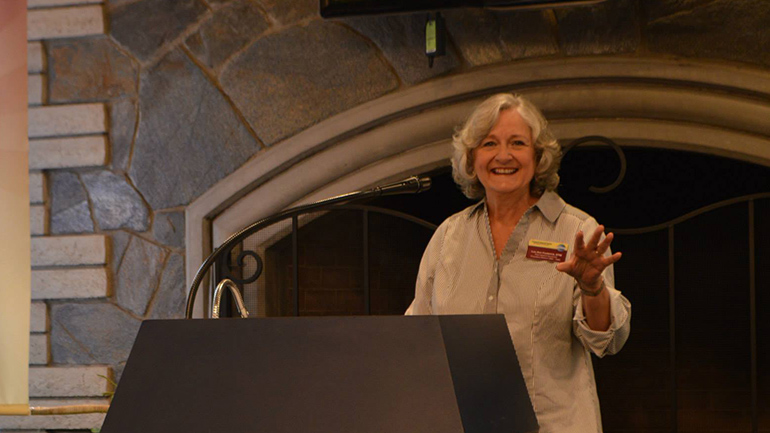
Photo by Harry Yan, DTM
How do you retain your existing club members? When and why do so many Toastmasters lose interest? Member retention is one of the greatest issues plaguing our Toastmasters clubs.
The Phoenix Club in Anaheim provided the venue and a delightful breakfast for participants in the second Founder’s District Retention Workshop. District leadership and members discussed existing Toastmasters tools and innovated solutions to invigorate clubs and retain members.
Founders District Lieutenant Governor Marketing, Siri Payakapan, DTM, and her team kicked off the conversation by presenting tools that could be leveraged for the ensuing “Innovation Hub” discussions. Lou Ann Federick, DTM, PDG, described what a Club Coach is and how to be successful when coaching a club. She was followed by John Angiolillo, DTM, PDG, who introduced how to use Speechcraft to rebuild membership and coalesce existing members. Dan Cossack, DTM, presented high level statistics on club success and the shortfall of available coaches, unveiling the Adopt-A-Club program to bridge the gap. Clubs Best Practices, the ‘glue’ in a vibrant club, was presented by Jack Schmidt, DTM, and provided creative ideas for building club team spirit and ownership.
After the presentations, participants grouped themselves into four Innovation Hubs to brainstorm solutions to real world retention challenges. Each Innovation Hub identified a leader who presented their findings.
Innovation Hub 1 focused on club #20 from Montebello which has been active for more than 80 years. Karen shared her team’s work identifying how to bolster membership and improve the club’s awareness. The club gets good foot traffic, but converting guests to members is a challenge. The club’s culture tends to be social in nature. Do guests feel they can learn and grow there? Holding a Speechcraft along with followup on guests after an Open House was just part of the coordinated solution developed by the team. Encouraging all club’s core members to maintain a “Toastmasters focus” is important for new people to feel welcome.
The “Make It Happen” team in the second Innovation Hub concentrated on club #100. Deborah and Della revealed their Hub’s “M-7” operational approach to address lack of growth. An important strength to leverage is the activity of the club’s core members outside of club walls. “Where do you see the club in one year?” This question, to be asked of the club’s leadership, was the cornerstone of the Hub’s thought process. Increasing diversity and attracting less experienced speakers via a Speechcraft was considered paramount. Seeking a club to adopt them was also recommended. Monitoring the progress of the plan (or any plan) is as important as the plan itself.
The key is the word “International” in Toastmasters International. What does your club have to offer? What makes your club unique? Identifying a club’s positives and using them to position the club is the best way to promote it. How do you increase your club’s appeal? Darrel of the third Innovation Hub spoke of the group’s work identifying attributes of clubs and how they could be used. Instead of bilingual, how about multilingual or multicultural? Is the club’s name limiting? Adaptability while maintaining a club’s uniqueness is key. “Better through bonding” echoes the importance of the people who make the club what it is.
Earlyn represented the A-Team or the Skin-in-the-Game-Team, the fourth Innovation Hub. She likened her team’s brainstorming session to a soup pot simmering with ideas. Who doesn’t like soup? Statistics indicate that member loss increases at the “7 month itch” or completion of 6 ½ speeches. After a few speeches, members may have gained confidence, not realizing that the ability to develop content and credibility comes later. All 3 c’s are important for communicating. Along with a member’s increase in confidence, their interest in Toastmasters may fade. Providing members with a reason to stay is critical. Proactive mentoring of existing members, speech-tip-of-the-day and recognition were the cornerstone of the A-Team’s presentation.
Beneficial information, engaging discussion and inventive solutions were the hallmarks of the day. Congratulations to the participants on their collaborative learning. “Learning never exhausts the mind.” – Leonardo da Vinci
